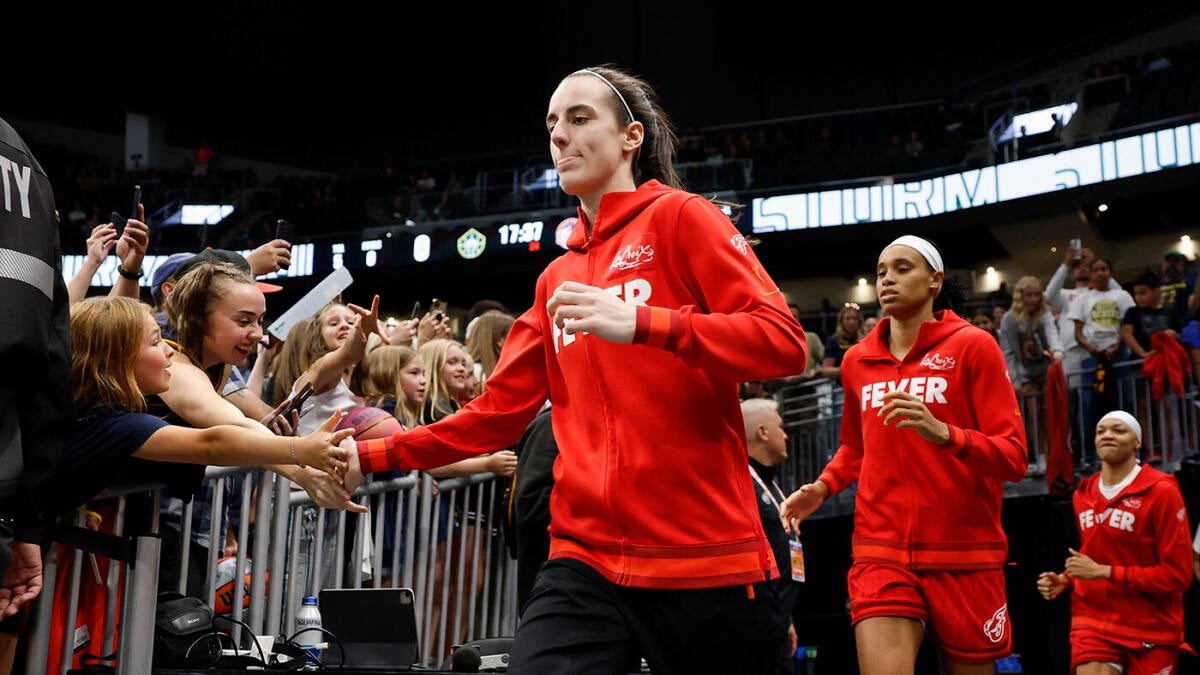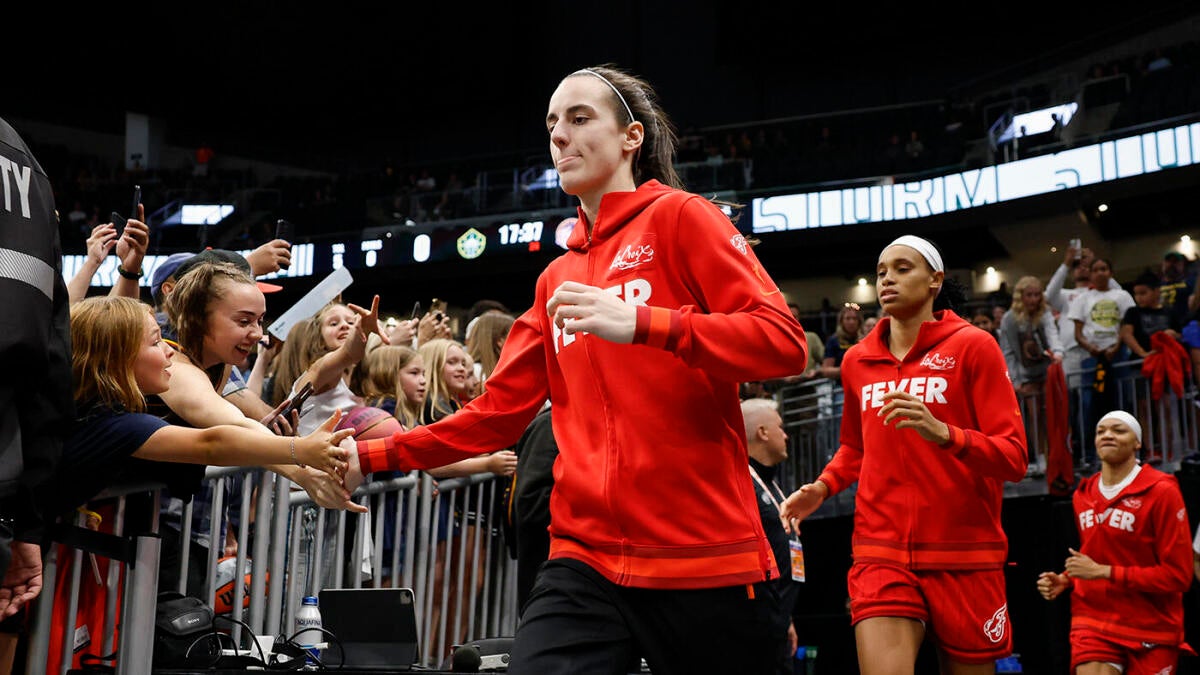Caitlin Clark, the Indiana Fever’s standout guard and reigning WNBA Rookie of the Year, is currently grappling with a recurring left groin injury that has cast a shadow over her team’s championship aspirations. This setback comes at a critical juncture in the season, raising questions about her availability for key matchups and the broader implications for the Fever’s playoff hopes. As the team navigates this challenge, the focus shifts to Clark’s recovery, the impact on the Fever’s dynamics, and the long-term trajectory of her burgeoning career.
The Nature of the Injury and Its Implications
Clark’s injury saga began earlier this season with a strained quadriceps muscle, which already disrupted her rhythm and the Fever’s offensive flow. The subsequent groin injury has further complicated her situation, forcing her to miss multiple games, including a highly anticipated matchup against Paige Bueckers and the Los Angeles Sparks. The Indiana Fever have listed her as “day-to-day,” a designation that underscores the uncertainty surrounding her return. Groin injuries are particularly tricky in basketball due to their propensity to recur if not managed with extreme caution. The Fever’s coaching staff, led by Stephanie White, has emphasized a deliberate and patient approach to Clark’s rehabilitation, prioritizing her long-term health over short-term gains.
The injury’s recurrence highlights the delicate balance between pushing through adversity and risking further damage. For Clark, who has quickly established herself as a cornerstone of the Fever’s success, this setback is a stark reminder of the physical toll that professional basketball demands. The team’s medical staff is likely employing a combination of rest, targeted rehabilitation, and strength training to address the injury’s root causes. However, the road to recovery is fraught with variables, making it difficult to predict when Clark will be fully cleared to return to game action.
The Ripple Effect on the Indiana Fever
Clark’s absence has had an immediate and palpable impact on the Indiana Fever’s performance. As the team’s primary offensive catalyst, she brings a unique blend of scoring prowess, playmaking ability, and clutch performances that are difficult to replicate. Her absence has forced the Fever to rely more heavily on role players, some of whom have stepped up, but none can fully compensate for Clark’s star power. The team’s offensive efficiency has dipped noticeably, and opponents have exploited the void left by her absence, adjusting their defensive schemes to target weaker links in the Fever’s lineup.
The timing of Clark’s injury could not be worse, as the WNBA Commissioner’s Cup Championship looms on the horizon. The Fever were considered strong contenders for the title, but their chances now hinge on Clark’s ability to return to form in time for the postseason. The team’s coaching staff is likely recalibrating their strategies to account for her absence, but the loss of a player of Clark’s caliber is a significant blow. The Fever’s depth will be tested, and their ability to adapt will determine whether they can maintain their championship aspirations despite this setback.
Long-Term Career Considerations for Caitlin Clark
At just the beginning of her professional career, Clark has already made a name for herself as one of the WNBA’s brightest young stars. Her playmaking ability, scoring touch, and leadership qualities have drawn comparisons to some of the league’s all-time greats. However, the recurring nature of her injuries raises concerns about her long-term durability. The Fever’s cautious approach to her rehabilitation is a testament to their commitment to her career longevity, but the road ahead will require careful management to ensure she remains at the peak of her abilities.
Clark’s situation underscores the importance of injury prevention and holistic player development in professional sports. The guidance of WNBA veteran Sue Bird, who has navigated her own share of injuries throughout her illustrious career, could prove invaluable in helping Clark navigate this challenging period. Bird’s insights on balancing competitive drive with self-care and recovery could help Clark avoid the pitfalls that have derailed other young stars. The Fever’s organization must also play a role in creating an environment that prioritizes player well-being, ensuring that Clark has the support she needs to thrive both on and off the court.
Fan and Media Reactions
The news of Clark’s injury has sparked a wave of concern among fans and media outlets alike. Social media platforms have been abuzz with speculation about the severity of the injury and its potential impact on the Fever’s championship hopes. Fans have expressed frustration at the timing of the setback, particularly as the season reaches its most critical phase. The uncertainty surrounding Clark’s return has added an extra layer of tension to an already intense playoff race.
Media coverage has struck a balance between acknowledging the seriousness of the injury and maintaining a cautious optimism about Clark’s prospects. Reports have highlighted the Fever’s measured approach to her rehabilitation, emphasizing the importance of patience in the recovery process. Clark herself has communicated a determined and hopeful outlook, though no definitive timeline for her return has been provided. This wait-and-see approach is typical of professional sports injuries, where the focus is on gradual progress rather than rushed comebacks.
The Path Forward
As Clark continues her rehabilitation, the focus will be on incremental progress and ensuring that she returns to the court fully healed and ready to contribute at a high level. The Fever’s medical and coaching staff will closely monitor her recovery, adjusting her training load as needed to prevent setbacks. The “day-to-day” designation suggests that her return will be contingent on how her body responds to treatment, and the team will likely err on the side of caution to avoid further complications.
For Clark, this period of recovery presents an opportunity to reflect on her career trajectory and the steps she needs to take to sustain her success. The support of her teammates, coaching staff, and the broader WNBA community will be crucial in helping her navigate this challenge. Her resilience and work ethic will be tested, but her ability to overcome adversity will ultimately define her as a player and a leader.
Conclusion
Caitlin Clark’s groin injury represents a significant hurdle for both the Indiana Fever and the player herself. The setback comes at a critical time in the season, raising questions about the team’s championship aspirations and Clark’s long-term career prospects. However, this challenge also underscores the importance of prudent injury management, holistic recovery, and the value of mentorship in professional sports. Clark’s resilience and the Fever’s adaptability will be key factors in determining how they navigate this obstacle. As the season progresses, the focus will remain on her recovery and the team’s ability to compete at a high level in her absence. Ultimately, this setback serves as a reminder of the unpredictable nature of sports and the determination required to overcome adversity on the path to greatness.












